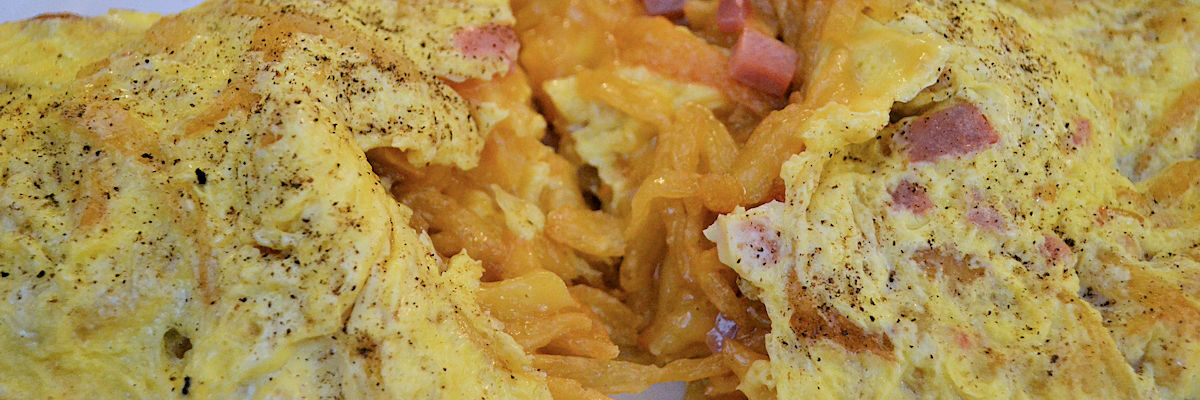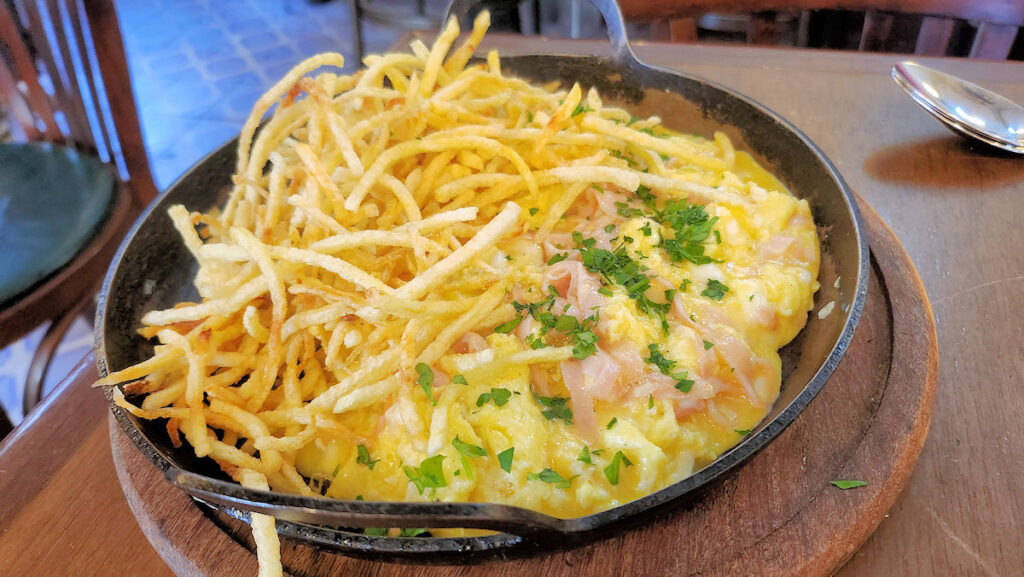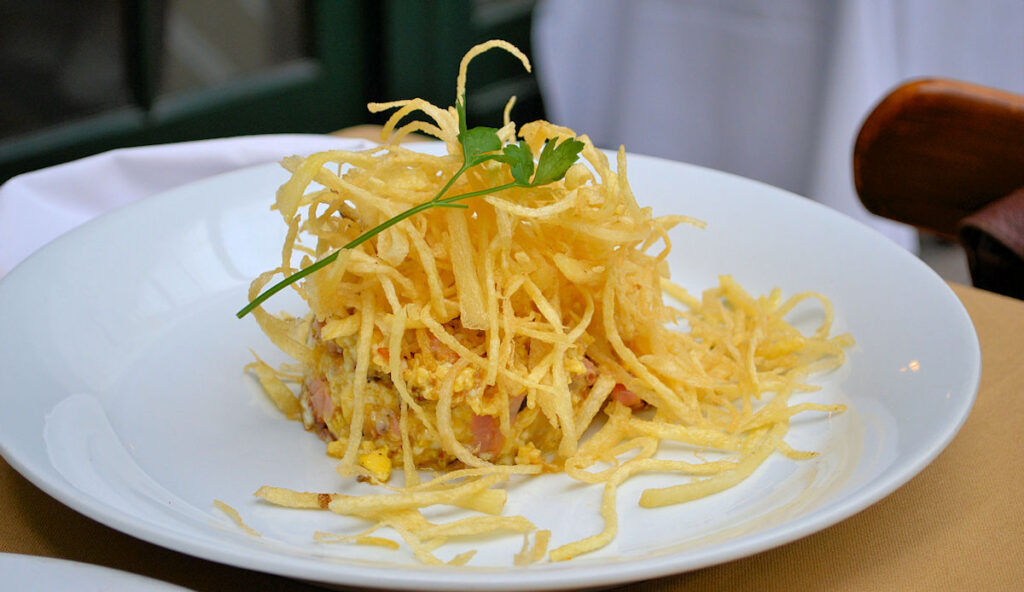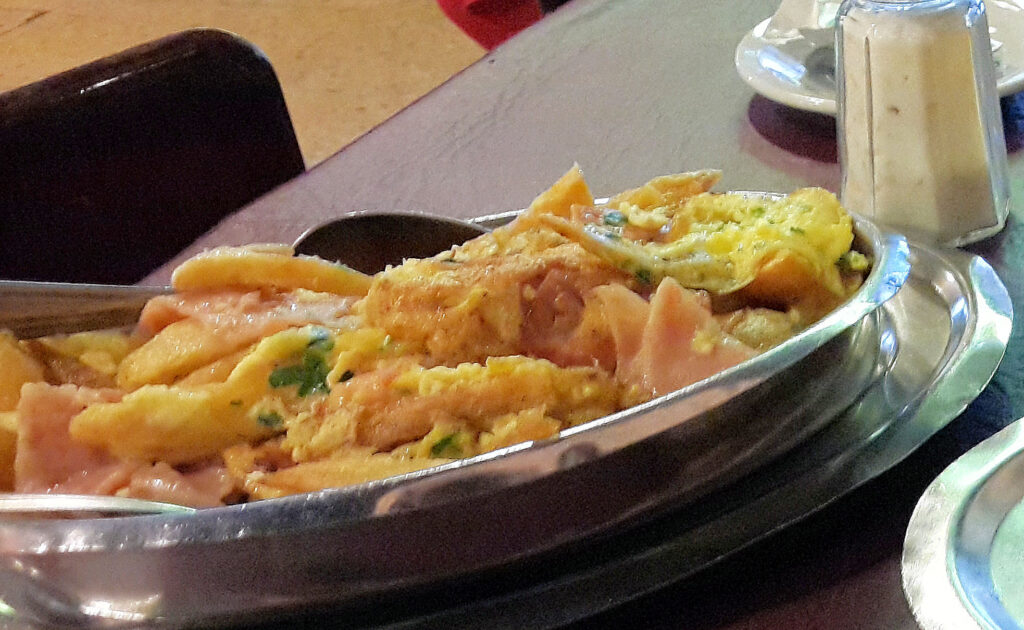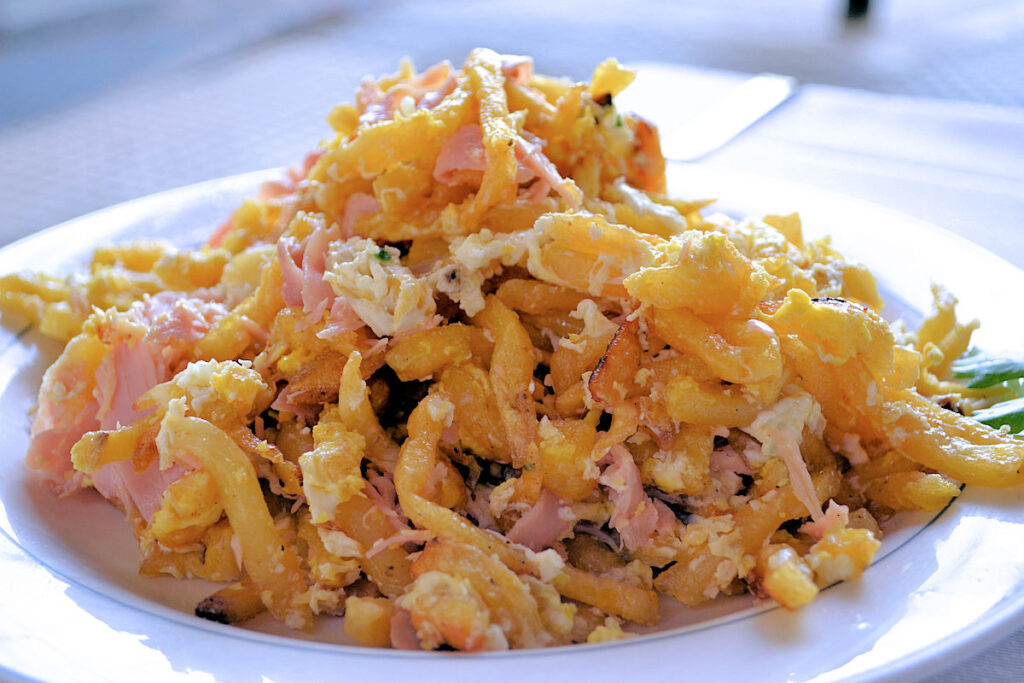I promised the other day that I’d get to a “Best of” post on Revuelto Gramajo – a traditional local dish of scrambled eggs and ham accompanied by fried potatoes. It took a few days as I had to go back through my various posts over the years. I even put together a little map of where I’ve tried the dish, which seems to be about three dozen spots. Not as many as I’d thought, but still – likely more than most of the people I know have tried it at, including Argentines. I’m always surprised when talking to local friends about one or another iconic dishes and finding that they’ve tried it at only a couple of places, settled on one as their favorite, and just never try it anywhere else. Those also tend to be the people who are loudest at declaring their choice the undisputed best. This is not unique to Argentines and their iconic dishes, I find it a pattern repeated among people everywhere.
I’ve summed up the history of this dish already in that last post (linked above), and my first post on the topic. I’m not going to do so again… let’s go straight to my “awards” for the best versions I’ve tried. I have no doubt that one or another of these will be replaced at some point in the future. Indeed, a couple of the places marked in black on my map, indicating they’re now defunct, were among my favorites at one time – I’d love the soft rolled omelet version offered at Munich Recoleta (long closed) to be on a plate in front of me once again (pictured at the top of the post).
The gospel for the recipe is a simple scramble of eggs – never whisked, just moved around in the pan so that you have streaks of white and yellow. Seasoned with salt and a small amount of pepper, and with a julienne of cooked ham. On the side, never mixed in, and never on top, should be papas pays, or, crispy shoestring potatoes, lightly salted. And that’s it.
Let me start with the two most classic versions, the first of which is also, for me, far and away the best.
This is as traditional as it gets, and if you truly want to try the dish as “it was meant to be”, you should just head yourself over to Los Galgos, Av. Callao 501, San Nicolas. First off, this is one of my favorite bodegones….
A bodegón is a classic institution of local gastronomy. It’s an interesting word in that its original meaning is a “still life”, as in a painting of domestic objects, usually food related, captured in time. At some point in the mid 19th century it came to refer to a particular type of tavern. While there are no hard and fast rules, there are certainly customary signs that you’re in a bodegón, the decor tends to be older in style, lots of dark wood, memorabilia, photos – usually of celebrities or sports figures, some hanging garlic, salamis, or hams, the classic touch of an old time cash register is not out of place.
The food – a mix of the traditional local “diner” type dishes of Argentine cuisine, usually interspersed with something “ethnic” to indicate the heritage of the family that owns the place. Most often that will be some specific regional dishes to some part of Spain or Italy, and to a lesser extent, Germany. People have their favorite spots to go, their favorite tables to sit at, their favorite waiters to serve them, and, their favorite dishes – most places have one or two specialties that they’re known for. Generous portions, simple but delicious (one hopes) preparations, are hallmarks. If Cheers had been a restaurant rather than a bar, it would have been a bodegón.
This is about as dead-on as you can get. It’s a soft scramble, not hard, with ham, and the egg was clearly left separate at the start of the cook. It’s served on the side of a huge mound of beautifully crisp shoestring potatoes. I suppose you could call the sprinkle of parsley an addition, but it probably wouldn’t even bother a purist. It’s a whopping portion – intended for two as a meal – and runs just shy of $11 these days. The dish has a place of honor on the menu, and is, I think, the only place that Grupo Gramajo has given an award to for its authenticity. They also offer a version made with mushrooms instead of ham for the veggie folk. Los Galgos also offers the best version I’ve had of one of my favorite local desserts, the milhojas de manzana, a multi-layered baked apple tart.
One ought to make a visit to El Club del Progreso, Sarmiento 1334, San Nicolás, the probable place of the dish’s invention. Now, given the legendary description of something thrown together in the midst of a hangover, it is unlikely that any care was taken as to plating, but, the club likes to claim that their version, while modernized and plated prettily, is the true one. It’s certainly one of the two nicest presentations of the dish I’ve encountered – the eggs and diced ham with very finely chopped herbs plated up in a ring mold to create about an 1½” high, 3? across cylinder, and then topped with absolutely crackly, crispy long shoestring potatoes. For me, despite the elegant presentation, the thing that takes away from this one being at the top is that the eggs are pretty much hard scrambled – which may help it hold together in a cylinder, but the dish lacks the creaminess of soft scrambled eggs. They also, at some point, took to putting diced bell pepper into the mix, though they’ll happily make it without. These days it runs around $11 – a far better price than the over $30 that they were charging the first time I visited, though given the size compared to the one above, it’s around three times the price.
I don’t have a great photo for this one, it was in the background of a photo of the main dish I was focused on. But the version of Revuelto Gramajo from Albamonte, Corrientes 6735 in Chacarita, is an excellent one. It’s got the whole soft scramble thing down pat. Here, they go… bigger than the traditional, in that the ham is not julienned or diced, but rather draped slices of the cold cut – like cutting each slice in quarters. They also use regular fries and toss them into the scramble – though given that they’re still crisp, I’d guess they do that at the last moment so they don’t get soggy. And, as many places do these days, there are peas in the mix. It’s well seasoned and delicious – and the version with regular fries tossed into the scramble is far more common than the classic approach – it’s pretty much what you’ll see at almost any bodegón. For this approach, this one tops the list for me. It’s also the best value of these four spots, coming in as a large side dish for barely over $4. Albamonte also has great pizza, and one of the best roast chickens around, in a white wine sauce.
And, finishing off with a version that strays a bit from the classic, but not so far that it’s unrecognizable. The offering at Liber Resto Bar, Av. del Libertador 690, right by the Patio Bullrich shopping mall in Recoleta, is for me, the best balanced version of one that goes on a tangent. It’s a generous portion, a mound of beautiful golden fries – not shoestring, but fairly thin – let’s say, McDonald’s thin. The addition of dark, caramelized onions (as opposed to the barely cooked onions at many places that offer the dish), and thin shreds of both ham and chicken breast is where it goes in its own direction. It’s also one of the better seasoned versions of the dish around – with not just salt, but a decent amount of pepper. At around $9, it’s a great option.
And that’s where I’m going to end this one. There are plenty of other delicious versions – you can see that on the map above, and there are also, as noted, a few to avoid. Since this is a dish I really enjoy when it’s made well, there will be more to come!
